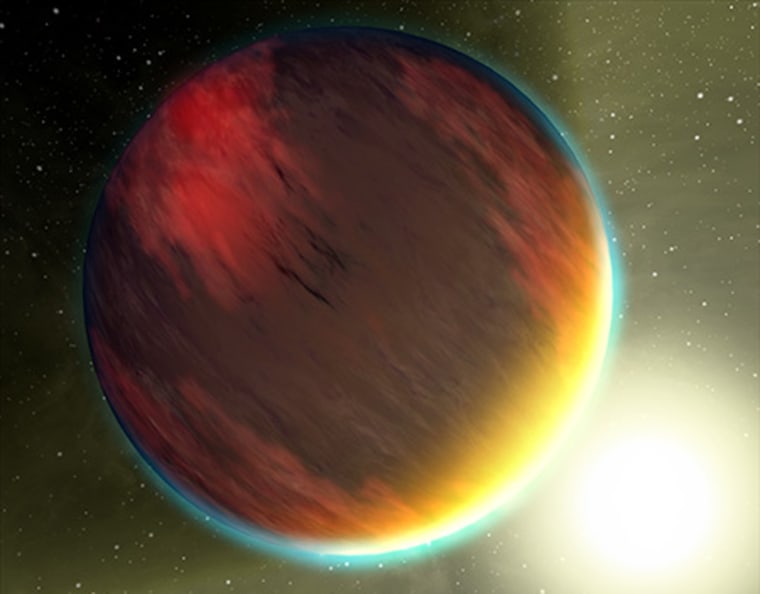Scientists taking their first "sniffs of air" from planets outside our solar system are baffled by what they didn't find: water.
One of the more basic assumptions of astronomy is that the two distant, hot gaseous planets they examined must contain water in their atmospheres. The two suns the planets orbit closely have hydrogen and oxygen, the stable building blocks of water. These planets' atmospheres — examined for the first time using light spectra to determine the air's chemical composition — are supposed to be made up of the same thing, good old H2O.
But when two different teams of astronomers used NASA's Spitzer Space Telescope for this new type of extrasolar planet research, they both came up dry, according to research published in Thursday's edition of Nature and the online version of the Astrophysical Journal Letters.
The study of one planet found hints of fine silicate-particle clouds. Research on the other planet found no chemical fingerprints for any of the molecules scientists were seeking.
Approach too ‘Earth-centric’
"We had expected this tremendous signature of water ... and it wasn't there," said the study leader for one team, Carl Grillmair of the California Institute of Technology and Spitzer Science Center. "The very fact that we've been surprised here is a wake-up call. We obviously need to do some more work."
Grillmair's colleague, Harvard astronomy professor David Charbonneau, said these surprising "sniffs of air from an alien world" tell astronomers not to be so Earth-centric in thinking about other planets.
"These are very different beasts. These are unlike any other planets in the solar system," Charbonneau said. "We're limited by our imagination in thinking about the different avenues that these atmospheres take place in."
Our own solar system has two planets without water in the atmosphere, Grillmair noted: Mercury, which doesn't have an atmosphere, and Venus, which is a different type of planet from the huge gaseous ones that would be expected to have the components of water in the air.
Water may be hiding, scientists suggest
So far, scientists have found 213 planets outside our solar system, but only 14 have orbits that make it possible for this type of study; only eight or nine of those are close enough to see. Grillmair's team studied the closest, which goes by the catchy name HD 189733b. It's a mere 360 trillion miles from Earth in the constellation Vulpecula. The other planet, HD209458b, is about 900 trillion miles away in the constellation Pegasus, and it's the one with the strange silicate cloud.
So where'd the water go?
Maybe it's hiding, scientists suggest. The water could be under dust clouds, or all the airborne water molecules have the same temperature, making it impossible to see using an infrared spectrograph. Or maybe it's just not there and astronomers have to go back to the drawing board when it comes to these alien planets.
The other finding on the more distant of the two planets seems to indicate that the atmosphere is full of silicon-oxygen compounds, said study lead author L. Jeremy Richardson of NASA's Goddard Space Flight Center.
"They'd be like dust grains and they would form clouds," Richardson said. And that cloud of silicates could be blocking the space telescope from measuring lower-lying water, he and other scientists said.
